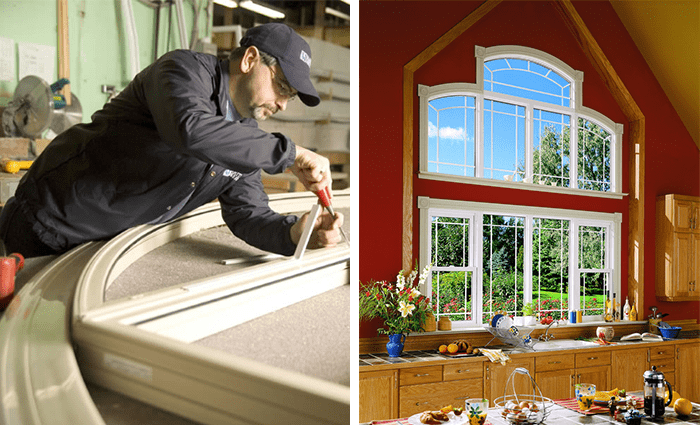(In this article, the terms NAFS and NAFS-08 refer to AAMA/WDMA/CSA 101/I.S.2/A440-08, NAFS—North American Fenestration Standard/Specification for windows, doors and skylights)
Introduced to us in NAFS-08, the 2008 edition of the North American Fenestration Standard, Performance Class has been a prominent feature of U.S. fenestration standards since the late 1980s.
In a previous article I explored Performance Class in some depth, looking at the history of the concept in American fenestration standards, at its intended use, and at the general test criteria by which products are classified. (For more information about how to choose a NAFS Performance Class click here)
This article looks at the four most common mistakes Canadian specifiers make with respect to NAFS Performance Classes, and concludes with practical advice for how to avoid them.
Mistake 1
Choosing Performance Class on the Basis of Building Type Alone
It is tempting to choose Performance Class on the basis of the “suggested” building type alone. After all, that seems to be the intent of the language in NAFS. But note that this language is highly qualified. What it’s really saying is that you choose products that have the air-water-structural properties required for the building, at the window and door sizes you have on the building. If the windows are relatively small, you may only need R or LC class products. If they are relatively large, or if you want to use stiffer products that are tested with a deflection limit of L/175, you may need CW or even AW.
In making the decision, keep in mind also the budget of your client. After all, selecting a Class that costs considerably more than one commonly used in buildings of a particular type is a decision that will be questioned.
Once you have determined the appropriate Class and specified products accordingly, you have the confidence that all bidders offering products of the same Class are offering products with equivalent properties. That is good to know when asked to approve alternate products to those you have specified.
Remember too that choosing a Performance Class other than R is not a code requirement. The Code requires that products have the appropriate Performance Grade “for the conditions and geographic location in which the window, door or skylight will be installed.” Neither the Code, nor NAFS tells you precisely how to choose a Performance Class.
Class LC products may be entirely suitable for a mid or high rise building if they meet the Performance Grade and Water Test Pressure requirements of the Canadian Supplement at the sizes required on the building. Class CW or even AW products may be desired for a custom home on account of larger sizes, high exposure to wind and rain, or for their haptic properties and perceived superior quality.
Mistake 2
Choosing Performance Class on the basis of Performance Grade
NAFS Table 1 presents the Gateway Requirements for the four Performance Classes in a way that leads the casual reader to assume Performance Class should be determined on the basis of Performance Grade. It is incorrect, however, to assume that if the building requires a Performance Grade of PG25, one must choose an LC Performance Class, or that PG30 requires CW, or that PG40 calls for Class AW. Doing so reflects a complete misunderstanding of the Performance Class concept.
What the casual reader of NAFS may not understand is that Table 3 supplements Table 1, and while Table 1 displays the minimum Performance Grade required to qualify a product for each Performance Class, Table 3 presents the allowable higher-than-minimum Performance Grade increments available to the specifier. In fact, one must consult both tables to see all the available NAFS Performance Grades, which range from PG15 to PG100. (The NAFS Cheat Sheet, available at the bottom of this page, provides all the allowable Performance Grades from NAFS Tables 1 and 3 in s single, convenient reference document.)
Useful as these tables are, they do not provide us with any guidance about how to choose a Performance Class.
These tables show us that for every Performance Class there are multiple Performance Grades available. Thus when a PG25 grade is required, there will be R and LC Class products available to meet the need. When a PG30 grade is required, there will be R, LC and CW Class products available to meet the need. And when a PG40 or higher grade is required, there may be products available from all four classes: R, LC, CW and AW. And even a lowly R Class product can have a Performance Grade as high as 100!
Mistake 3
Choosing Performance Class Arbitrarily
It’s all too easy to over-specify performance requirements when one does not really understand how to apply them and there is no perceived risk in doing so.
Fear of making inappropriate decisions that could result in litigation is another factor that can lead us to over-specify performance requirements. Hopefully an appreciation of the imprecise and subjective way in which NAFS suggests we choose a NAFS Performance Class will allay such concerns.
Keep in mind there are significant cost differences between product classes that need to be justified to the building owner on the basis of rational criteria. On a larger building, the costs of over-specifying Performance Class will be significant.
Mistake 4
Applying Performance Class to Products Outside the Scope of NAFS
The North American Fenestration Standard does not, in fact, cover all fenestration products. (For a complete list of products excluded from NAFS, see NAFS-08 pages 6 – 7.)
Specifiers need to be aware that it is not possible to specify Performance Class for products such as storefront, curtain wall, commercial entrances, commercial steel doors or sloped glazing. Why? Because they are not within the scope of NAFS there are no specified Performance Class or Performance Grade criteria for them. (Window wall products, while not named in NAFS-08, are defined in NAFS-11, where they are implicitly treated as mulled windows, and as such are legitimately within the scope of NAFS.)
It is possible, and certainly worthwhile, to specify the performance of operable vents and doors installed within curtain walls with reference to NAFS Performance Classes and Performance Grades, but not for the curtain wall itself.
The appropriate way to specify the performance of curtain walls, storefronts, and other “commercial” fenestration products not in the scope of NAFS is with reference to the industry manuals and test methods for those products. The Canadian Supplement can certainly be used to determine the appropriate design wind pressure and water penetration resistance test pressure, but tested air-water-structural performance is specified with reference to the appropriate laboratory test methods and site-specific engineering, and often field testing of mockups and installed products as well. Basically, the same way we specified these products prior to the introduction of NAFS.
One useful guide for this purpose is the Glazing Systems Specifications Manual available from the Fenestration Association of BC (FENBC). The most comprehensive documents on this subject are from the American Architectural Manufacturers Association (AAMA). The AAMA SFM-1-14 Aluminum Storefront and Entrance Manual provides detailed guidance on products and hardware as well as design and performance requirements, together with guide specifications. The AAMA CW-DG-1-96 Curtain Wall Design Guide summarizes curtain wall design and performance issues as well as test methods, and the AAMA MCWM-1-89 Metal Curtain Wall Manual provides guide specifications and technical references.
No Mistake
The Easy Way to Select Appropriate Performance Classes
The easiest way to become comfortable with Performance Class decisions is this: ask the suppliers of products you know and trust about the Performance Classes their various product lines qualify for. This familiarity will help you to appreciate what Product Class looks like in the real world, and to make confident and defensible decisions with respect to the application of this attribute when you choose or specify fenestration products.





